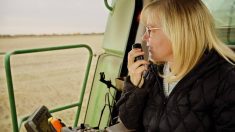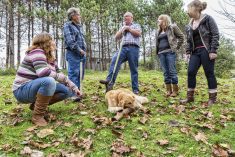In south-central Manitoba, two brothers who we’ll call Herb, 75 and Fred, 60, have farmed for more than 40 years. They’ve raised cattle and produced mixed grains. Neither has married and there are no children or other obvious heirs.
In their four decades of farming the brothers have built up substantial off-farm assets. There’s enough non-registered cash and stocks to fund comfortable retirements. Fred still farms but Herb, who stopped farming a decade ago, is well into his retirement, though he still has ownership of some land. He has been selling off parcels but still has three quarters of pastureland.
The brothers approached Erik Forbes, a registered financial planner, and Nathan Heppner, a certified financial planner, of Forbes Wealth Management Ltd. at Carberry, Man. for advice for planning a tax-efficient way to pass Herb’s land to Fred and meet other estate goals.
Read Also

Gentle treatments for pain in the neck
Heading toward year-end, people unknowingly tense up against the cold and busyness, causing neck pain that can often be treated with appropriate support and gentle mobility, athletic therapist Kathlyn Hossack says.
The goal is financial efficiency, but, as well, the brothers want to benefit their local agriculture community. When they pass away, they want to leave their estate to civic organizations and charities.
It’s an unusual situation, for charitable gifts can generate tax credits that pay for taxes on final returns, the planners note. But getting to the point of donation is neither simple nor a straight path.
The first thing to do is to devise a way to transfer three remaining quarters of pastureland from Herb to Fred. The land has an estimated value of $1,500 per acre — quite a jump from an initial cost of $200 per acre. Herb does not need cash from a sale to support his retirement. But he cannot do as he might with a child — that is, pass the land on at book value. If he did that, there could be adverse tax consequences, Forbes explains. Therefore, Herb should sell the land to Fred at fair market value, Heppner adds.
Herb has $100,000 of his lifetime capital gains exemption — the LCGE for short. The book value of $200 per acre times 480 acres is $96,000. He can use the LCGE to reduce the capital gain to $524,000.
There is a need to observe that the capital gains inclusion rate may rise after June 25, 2024, so that after $250,000, the inclusion rate will move from 50 per cent to 66-2/3 per cent. We will assume that this increase happens and that the transactions occur after June 25.
Here is how the math works:
- Market value of land at $1,500 per acre: $720,000
- Book value of land at $200 per acre: $96,000
- Capital gain: $624,000
- Capital gains exemption: $100,000
- Net capital gain: $524,000
- Inclusion rate on first $250,000: 50.0 per cent
- Inclusion rate on $274,000: 66.6 per cent
- Taxable income: $307,500
With the land sale to Fred, Herb will have $307,000 of additional taxable income. There may also be some alternative minimum tax (AMT) Herb has to pay. However, he may be able to get relief from the AMT because a person can claim it against income tax payable in the following seven years.
Herb does not need money from the sale and hesitates to do anything that might result in adverse treatment by the Canada Revenue Agency. Thus, Herb cannot use a transfer price other than fair market value, Forbes explains. The risk is that they could incur penalties, even double taxation.
If at Herb’s passing, his estate is left with some cash and securities in his non-registered investment account, his liability will be an estimated value of $1 million and a book value of $200,000. Herb wants to leave the value of non-registered securities to charities, as noted.
Herb has two options, the planners observe:
- donate cash, or
- donate securities directly to registered charities.
If he sells his securities, there would be a hefty bill on $800,000 of unrealized capital gains.
- Unrealized capital gain: $800,000
- Inclusion rate on $250,000: 50.0 per cent
- Inclusion rate on $550,000: 66.6 per cent
- Taxable income: $491,300
- Tax rate in Manitoba: 51 per cent
- Tax payable: $250,563
In this scenario, after tax there would be $749,437 left for charitable donation. However, if Herb were to donate the securities to the charities in-kind, he would forgo having to pay capital gains tax. Thus, he would donate $1 million of securities and since the charity is a non-taxable entity, when it disposes of the securities, they would have $1 million. In both cases his estate receives an offsetting tax credit for the donation amount.
When Fred dies, a similar transaction can be done with the land. His estate can pass all land to charities, thereby eliminating tax on the unrealized gain of land value. The charity gets the land and Fred’s estate would receive offsetting tax credits for the fair market value of the land, the planners conclude.















